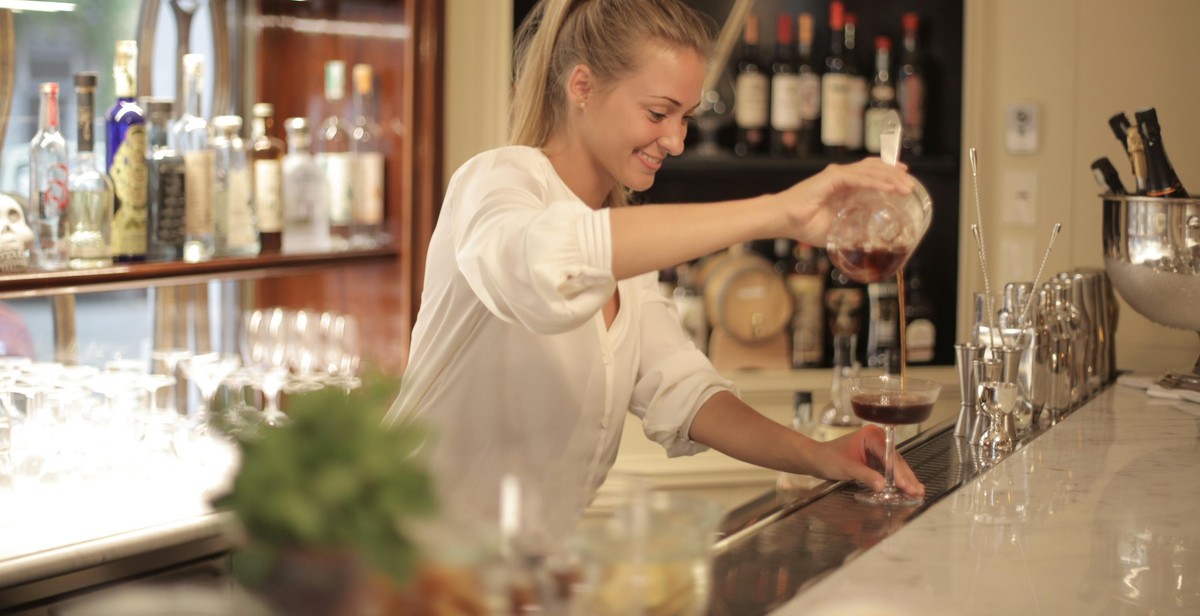How to Decant Wine: Proper Techniques for Aerating and Serving
Decanting wine is a process that involves pouring wine from its original bottle into a separate container before serving. This technique is used to separate the wine from any sediment that may have accumulated during aging, as well as to expose the wine to oxygen, which can enhance its flavor and aroma. Decanting wine is a practice that has been used for centuries, and it has become an essential part of serving wine in many cultures around the world.
What is Decanting?
Decanting is the process of transferring wine from its original bottle to another container before serving. The most common reason for decanting is to separate the wine from any sediment that may have accumulated in the bottle. Sediment is a natural byproduct of the aging process and can be found in many older wines. It is made up of tannins, pigments, and other solids that have settled to the bottom of the bottle over time. Decanting removes the sediment and leaves behind a clear, bright wine.
Why Decant Wine?
Decanting wine has several benefits. First and foremost, it separates the wine from any sediment that may have accumulated during aging. Sediment can give wine a gritty texture and a bitter taste, so removing it can significantly improve the wine’s flavor and aroma. Additionally, decanting exposes the wine to oxygen, which can help to soften the tannins and enhance the wine’s aroma. This process is particularly useful for young, tannic wines that may benefit from aeration.

Choosing the Right Decanter
Choosing the right decanter is crucial in enhancing the flavor and aroma of your wine. There are different types of decanters available in the market, each with its unique design and features. Here are some factors to consider when choosing the right decanter:
Types of Decanters
Before choosing a decanter, it’s essential to know the different types of decanters available. They include:
- Traditional Decanter: This classic decanter has a wide base and a long neck and is suitable for decanting bold red wines.
- Carafe Decanter: This decanter has a wide base and a shorter neck, making it ideal for white wines and young red wines.
- Aerator Decanter: This decanter is designed to aerate wine, enhancing its flavor and aroma in a shorter time.
- Electric Decanter: This decanter uses electricity to aerate wine, making it perfect for those who need to decant wine quickly.
How to Choose the Right Decanter
When choosing the right decanter, consider the following:
- Type of Wine: The type of wine you want to decant will determine the type of decanter to use. For instance, a traditional decanter is perfect for bold red wines, while a carafe decanter is ideal for white wines and young red wines.
- Design: Choose a decanter with a design that suits your style and complements your wine collection.
- Size: The size of the decanter should be proportional to the amount of wine you want to decant. A larger decanter is ideal for decanting a full bottle of wine, while a smaller one is perfect for half or quarter bottles.
- Material: Decanters are made of different materials such as glass, crystal, and acrylic. Choose a material that is durable and easy to clean.
- Price: Decanters come in different price ranges. Choose a decanter that fits your budget and offers the features you need.
| Decanter Type | Best for |
|---|---|
| Traditional Decanter | Bold Red Wines |
| Carafe Decanter | White Wines, Young Red Wines |
| Aerator Decanter | All Wines |
| Electric Decanter | All Wines, Quick Decanting |
Choosing the right decanter is essential in enhancing the flavor and aroma of your wine. Consider the type of wine, design, size, material, and price when choosing a decanter. With the right decanter, you can enjoy your wine to the fullest.

Preparing the Wine for Decanting
Decanting wine is a process that involves transferring the contents of a bottle of wine into a decanter before serving. This process is essential for various reasons, including removing sediment, improving the wine’s flavor, and allowing the wine to breathe. However, before you start decanting your wine, you need to prepare it properly. Here are some tips on how to prepare your wine for decanting:
When to Decant Wine
Decanting wine is not always necessary, but it is recommended for certain types of wines. Generally, you should consider decanting wine if:
- The wine is aged or has been stored for a long time
- The wine has sediment at the bottom of the bottle
- The wine is young and needs to be aerated
Decanting wine can help improve the wine’s flavor and aroma, making it more enjoyable to drink. However, not all wines need to be decanted, so it’s essential to know when to decant and when not to.
How to Decant Red Wine
The process of decanting red wine is relatively simple. Here’s how to do it:
- Stand the bottle of wine upright for several hours before decanting. This allows any sediment to settle at the bottom of the bottle.
- Remove the foil from the top of the bottle and wipe the neck of the bottle clean.
- Hold the decanter at a 45-degree angle and slowly pour the wine into the decanter. Be careful not to disturb the sediment at the bottom of the bottle.
- Stop pouring when you get to the sediment at the bottom of the bottle. Discard the sediment.
- Let the wine sit in the decanter for at least 30 minutes before serving. This allows the wine to aerate and improve its flavor.
How to Decant White Wine
Decanting white wine is not as common as decanting red wine, but it can still be beneficial for certain types of white wine. Here’s how to do it:
- Chill the bottle of white wine for several hours before decanting. This helps to remove any sediment that may be present.
- Remove the foil from the top of the bottle and wipe the neck of the bottle clean.
- Hold the decanter at a 45-degree angle and slowly pour the wine into the decanter.
- Let the wine sit in the decanter for at least 15 minutes before serving. This allows the wine to aerate and improve its flavor.
By following these tips, you can prepare your wine for decanting properly and enjoy its full flavor and aroma.

Aerating the Wine
Wine is often aerated to enhance its flavor and aroma. Aerating wine means exposing it to air, which allows the wine to “breathe” and release its full potential. Aerating wine can soften tannins, reduce bitterness, and bring out the wine’s unique flavors and aromas.
Why Aerate Wine?
There are several reasons to aerate wine. Firstly, younger wines tend to have more tannins, which can make them taste bitter and astringent. Aerating wine can help to soften these tannins, making the wine smoother and more enjoyable to drink. Secondly, aerating wine can help to release the wine’s aroma, allowing you to fully appreciate its bouquet. Thirdly, aerating wine can help to remove any unwanted flavors or aromas that may have developed during the wine-making process.
How to Aerate Wine
There are several ways to aerate wine. One common method is to pour the wine into a decanter and let it sit for at least 30 minutes before serving. This allows the wine to breathe and release its full potential. Another method is to use a wine aerator, which is a small device that attaches to the bottle and aerates the wine as you pour it. Wine aerators are quick and easy to use and can be a great option if you don’t have a lot of time to spare.
If you don’t have a decanter or wine aerator, you can also aerate wine by simply swirling it in your glass. This allows the wine to come into contact with air, which can help to release its flavors and aromas. However, this method is less effective than using a decanter or wine aerator.
It’s important to note that not all wines need to be aerated. Older wines, for example, may not benefit from aeration and may even be harmed by it. If you’re unsure whether or not to aerate a particular wine, it’s always a good idea to consult with a wine expert or sommelier.

Serving the Wine
After decanting your wine, it’s time to serve it. Here are some tips on how to serve decanted wine:
Temperature
Make sure the wine is at the proper serving temperature. Red wines should be served between 60-65°F (15-18°C) and white wines should be served between 45-50°F (7-10°C). Use a wine thermometer to check the temperature before serving.
Glassware
Use appropriate glassware for the wine you are serving. Red wines should be served in larger glasses with a wider bowl to allow for more aeration and to capture the wine’s aromas. White wines should be served in smaller glasses with a narrower bowl to help preserve the wine’s cooler temperature.
Pouring
Pour the wine slowly and steadily into the glass, leaving any sediment in the decanter. Hold the bottle by the base or the punt (the indentation at the bottom of the bottle) to avoid warming the wine with your hands.
Pairing
Pair the wine with appropriate foods. Red wines pair well with heavier dishes such as red meat, while white wines pair well with lighter dishes such as fish or chicken.
How Long Can Decanted Wine Last?
Once wine has been decanted, it should be consumed within a few hours. Although decanting can help preserve the wine’s flavor and aroma, it does not prevent oxidation. If you have leftover wine, you can pour it back into the original bottle and re-cork it, but it will not last as long as unopened wine.
| Wine Type | Serving Temperature |
|---|---|
| Red | 60-65°F (15-18°C) |
| White | 45-50°F (7-10°C) |
Conclusion
Decanting wine is an essential process that enhances the taste, aroma, and texture of your wine. It’s a simple process that requires a little patience and practice to perfect. By following the proper techniques for aerating and serving your wine, you can elevate your wine experience to the next level.
Benefits of Decanting Wine
Decanting wine has numerous benefits, including:
- Improved taste and aroma
- Softer tannins
- Enhanced texture
- Removal of sediment
These benefits make decanting wine a must for any wine enthusiast who wants to enjoy the full potential of their wine.
Proper Techniques for Decanting Wine
When decanting wine, it’s essential to follow the proper techniques to ensure that you get the best results. These techniques include:
- Choosing the right decanter
- Preparing the wine for decanting
- Pouring the wine into the decanter
- Aerating the wine
- Serving the wine
By following these techniques, you can ensure that your wine is properly aerated and served at its best.
Final Thoughts
Decanting wine is an art that requires patience, practice, and knowledge. By following the proper techniques for aerating and serving your wine, you can enjoy the full potential of your wine and elevate your wine experience to the next level. So, the next time you uncork a bottle of wine, take the time to decant it properly, and savor the difference it makes.
